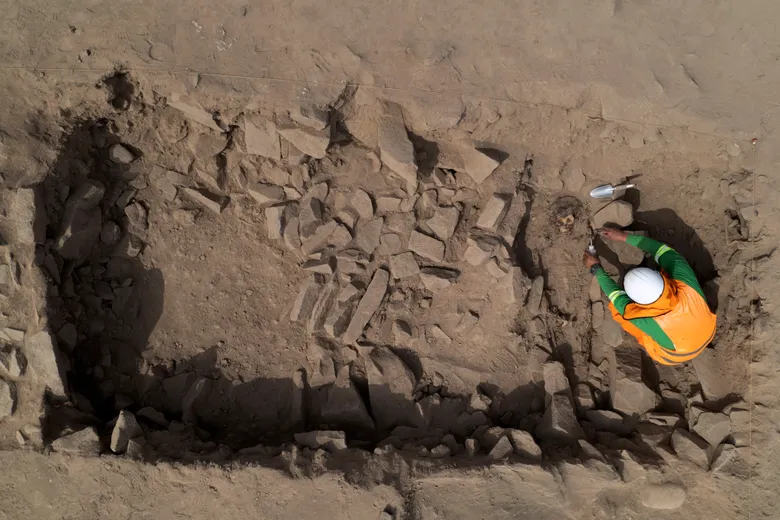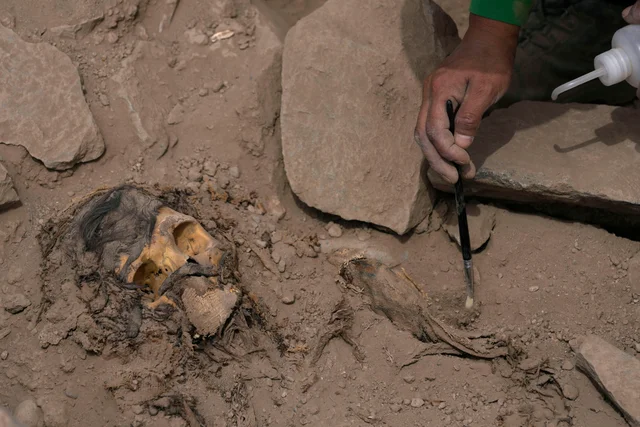An Ancient Peruvian Mummy Found Near a Modern Soccer Field, Surrounded by Coca Leaves
In a fascinating convergence of ancient and modern, archaeologists in Peru have uncovered a mummy surrounded by coca leaves atop a hill, surprisingly located near a professional soccer club’s practice field. This extraordinary discovery, made in the Rímac district of Lima, highlights how the sprawling urban landscape of Peru’s capital city often overlays layers of rich pre-Hispanic history. The find underscores that many seemingly ordinary hills and undeveloped plots within Lima are, in fact, “huacas” – ancient sacred sites or burial grounds.

The mummy, believed to be a male, was found lying face up with its lower extremities tied with a rope braided from plant-based vines, suggesting a deliberate and ceremonial burial. Stones were placed around the body, which was interred about a meter deep. Crucially, the presence of coca leaves and seashells alongside the remains indicates that these items were integral to the burial ritual. While the mummy’s exact age is pending radiocarbon dating, archaeologists speculate it could be approximately 3,000 years old, potentially belonging to the Manchay culture, known for its U-shaped clay temples in the valleys of Lima.
 This discovery provides invaluable insights into ancient Peruvian burial practices, particularly the significance of coca leaves in their rituals. Coca was not merely a stimulant but held profound spiritual and ceremonial importance in many Andean cultures, often used as an offering to deities or for medicinal purposes. The location of the burial, atop a destroyed U-shaped clay temple, further emphasizes its ritualistic context. This find is a powerful reminder of Peru’s deep archaeological heritage, where the echoes of ancient civilizations continue to emerge in unexpected places, even alongside the vibrant pulse of contemporary life
This discovery provides invaluable insights into ancient Peruvian burial practices, particularly the significance of coca leaves in their rituals. Coca was not merely a stimulant but held profound spiritual and ceremonial importance in many Andean cultures, often used as an offering to deities or for medicinal purposes. The location of the burial, atop a destroyed U-shaped clay temple, further emphasizes its ritualistic context. This find is a powerful reminder of Peru’s deep archaeological heritage, where the echoes of ancient civilizations continue to emerge in unexpected places, even alongside the vibrant pulse of contemporary life